String Quartet No. 1 Clouds (Score)
1996
Details
Description
SKU: PE.EP67750
1996. Composed by Chou Wen-chung. String Quartet Score. 20th Century; Classical. Score. Composed 1996; First Performance: December 1st, 1996 (Brentano Quartet). 52 pages. Duration 00:35:00. Edition Peters #98-EP67750. Published by Edition Peters (PE.EP67750).ISBN 9790300744575.
For decades I have been developing ways of synthesizing the concepts and practices of Eastern and Western music. I consider chamber music the ideal medium for the realization in sound of the results of this aesthetic and theoretical thinking. Because of its exceptional homogeneity, the flow of sound of a string quartet is as close a sonic equivalent to the flow of ink in brush calligraphy as that of the music for the qin (zither). I believe calligraphy is the foundation of all artistic expression in China and that qin music is the essence of Chinese musical expression. Both have influenced me deeply. In my quartet, I attempt to fuse my musical thoughts with the legacy of the string quartet.
This product is Printed on Demand and may take several weeks to fulfill. Please order from your favorite retailer.
The title Clouds refers to the quality shared by cloud formations and calligraphy: the continual process of change. The phenomenon of mingling and melting clouds - in transformation, aggregation, and dispersion - is the aesthetic impetus for the musical events and progressions in the quartet.
This ephemeral phenomenon is expressed through variable modes based on permutations in the I Ching (Yijing, or Book of Changes), the concept of yin-yang duality, and various modal theories of the East and West. The octave is divided into three contiguous minor thirds, each either yin or yang, depending on how it is further partitioned into major and minor seconds. Each modal formation consists of a permutation of these tripartite segments, in ascending and descending orders. Each mode may consist of, in either direction, six to 12 pitches, according to the number of partitioned segments and the division of major seconds.
This continual mutation in the progression and interplay among modes results in alteration of intervals by a half-step musical phenomenon confirming the concept of yin-yang exchangeability as well as that of chromatics in Western mu.
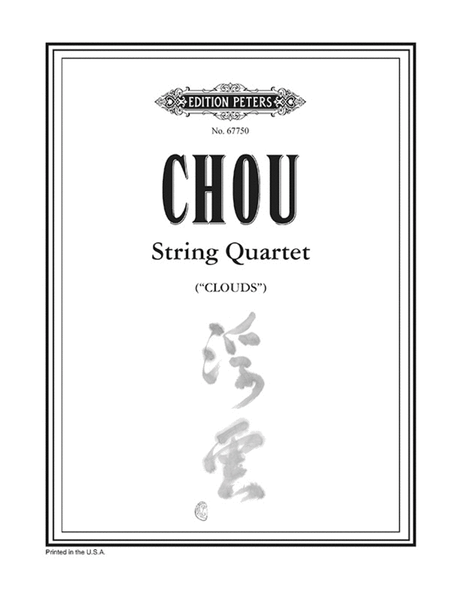
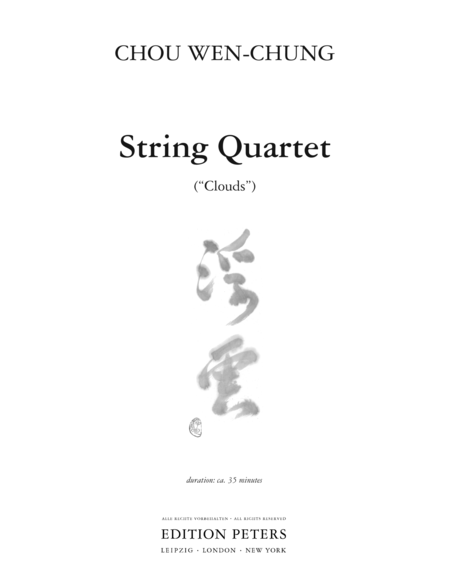
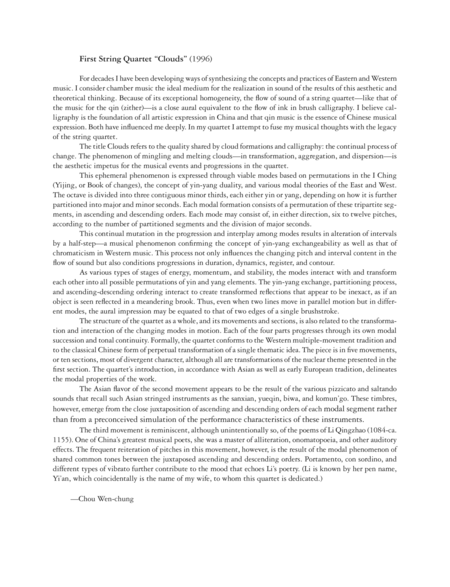
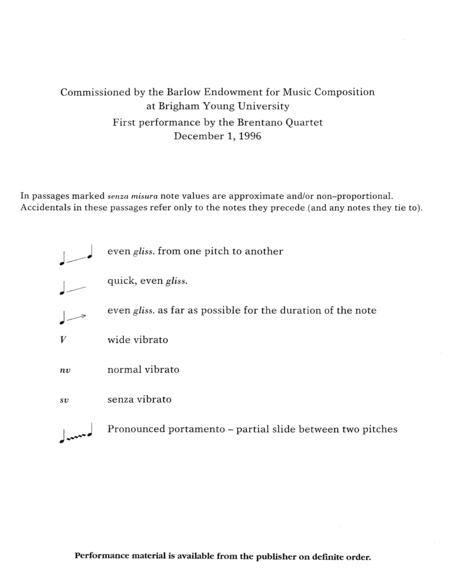

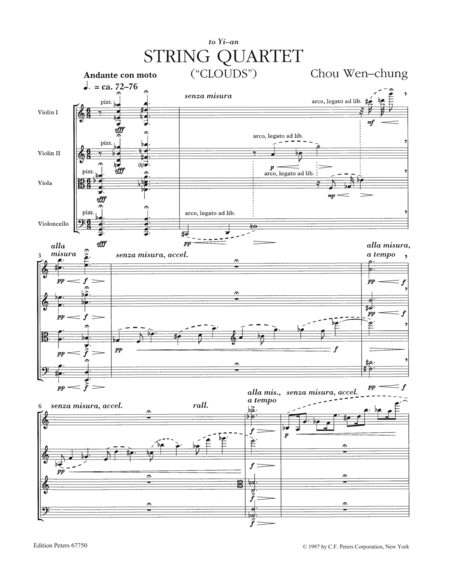
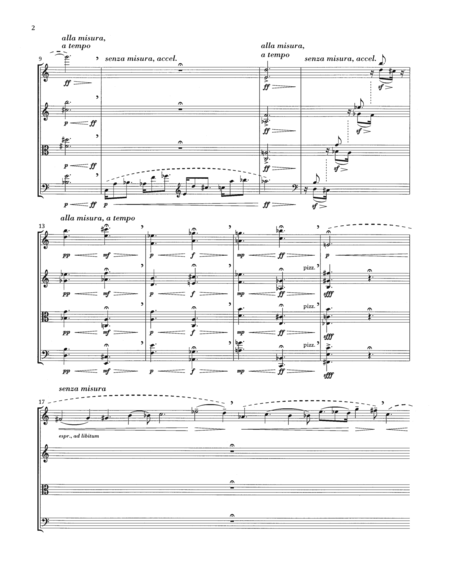
 Share
Share